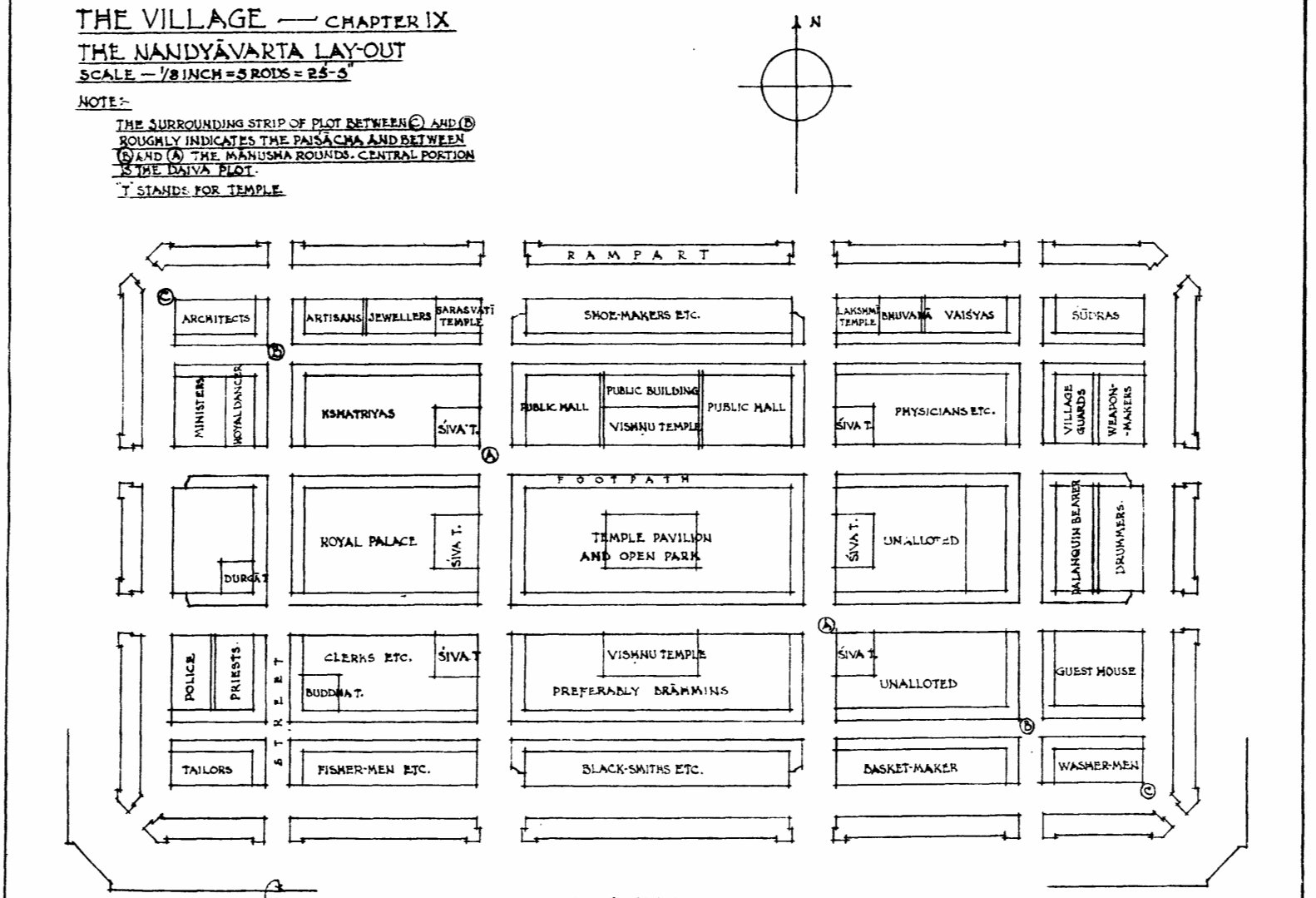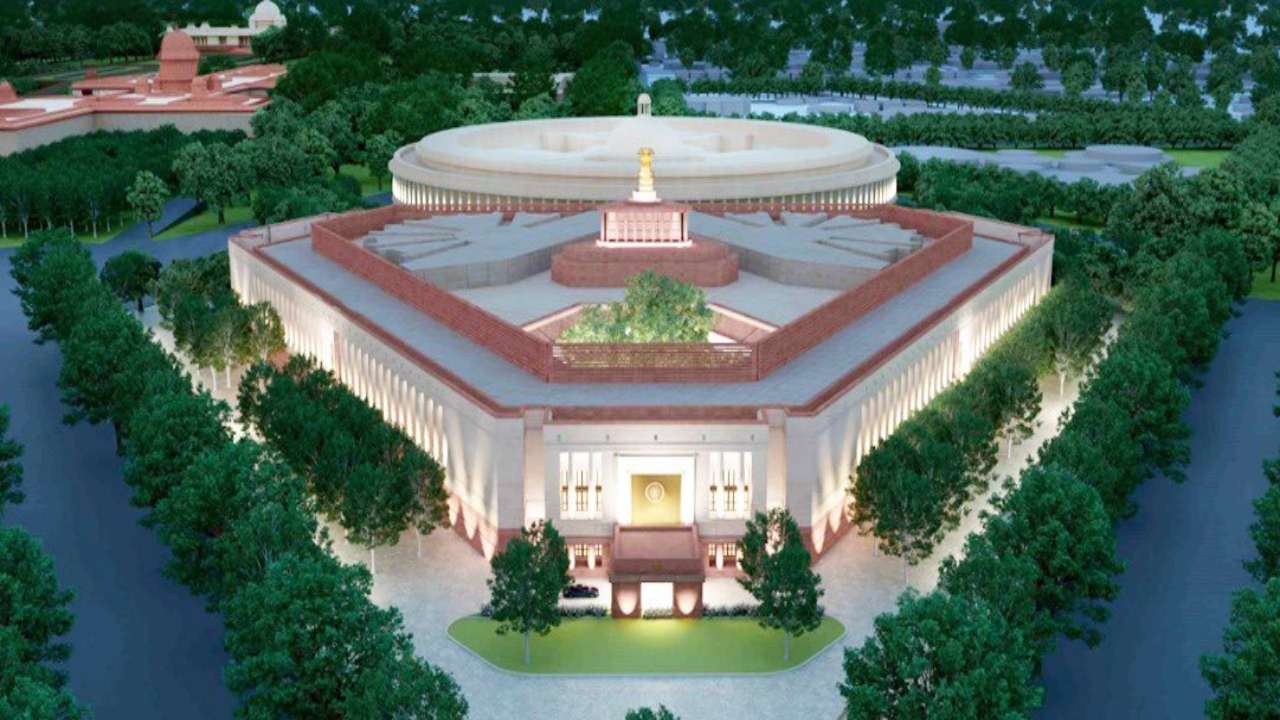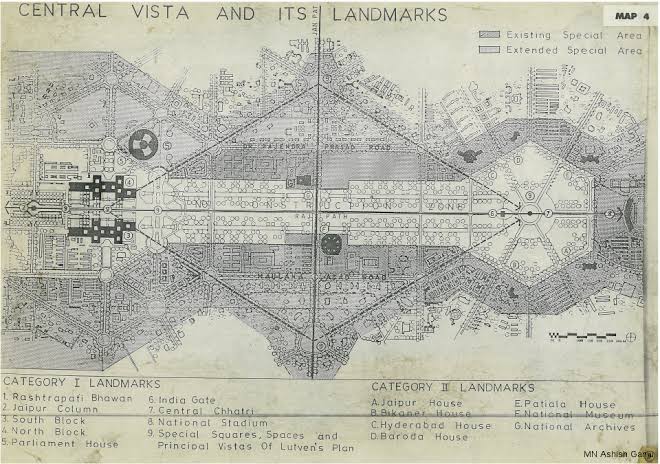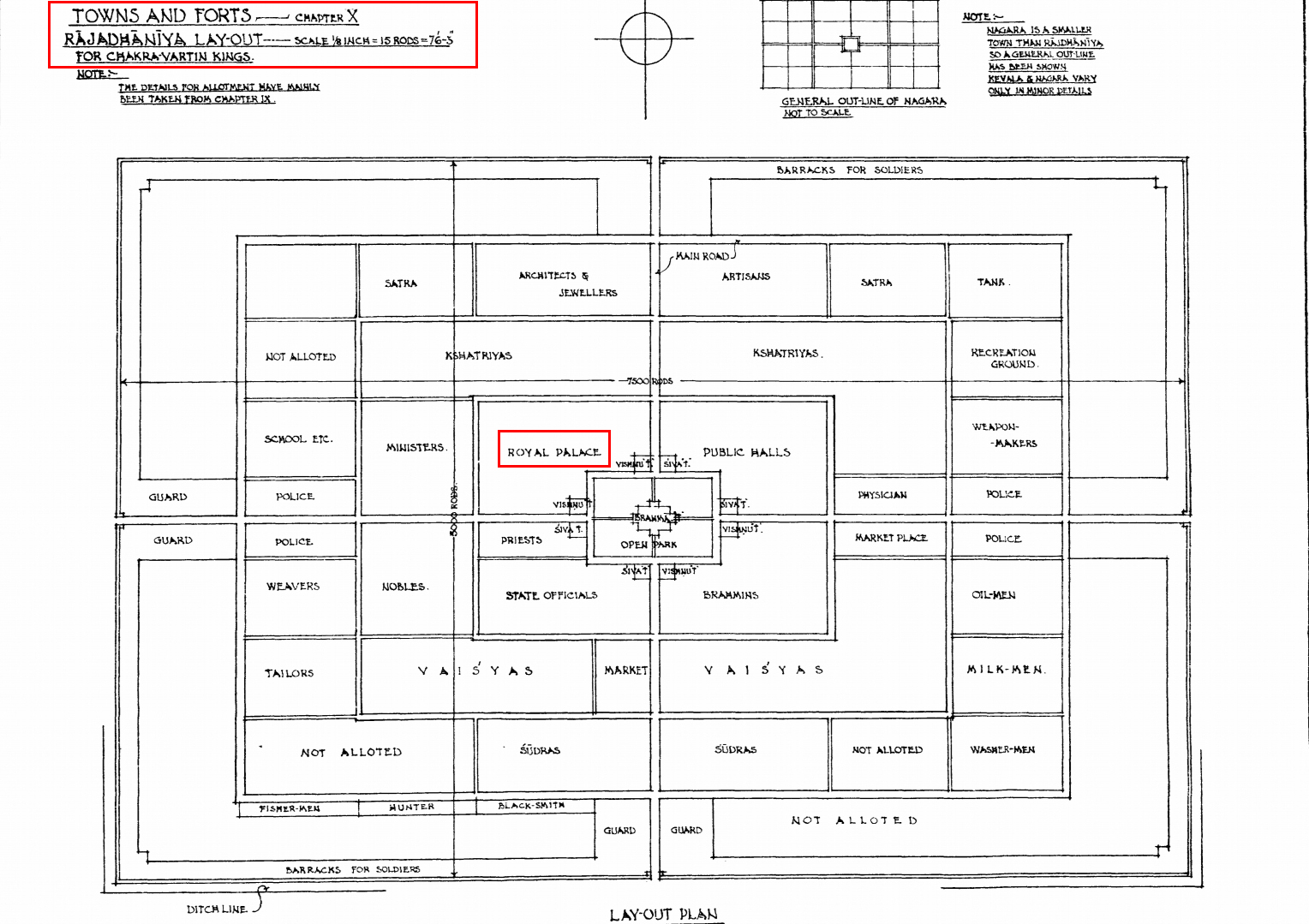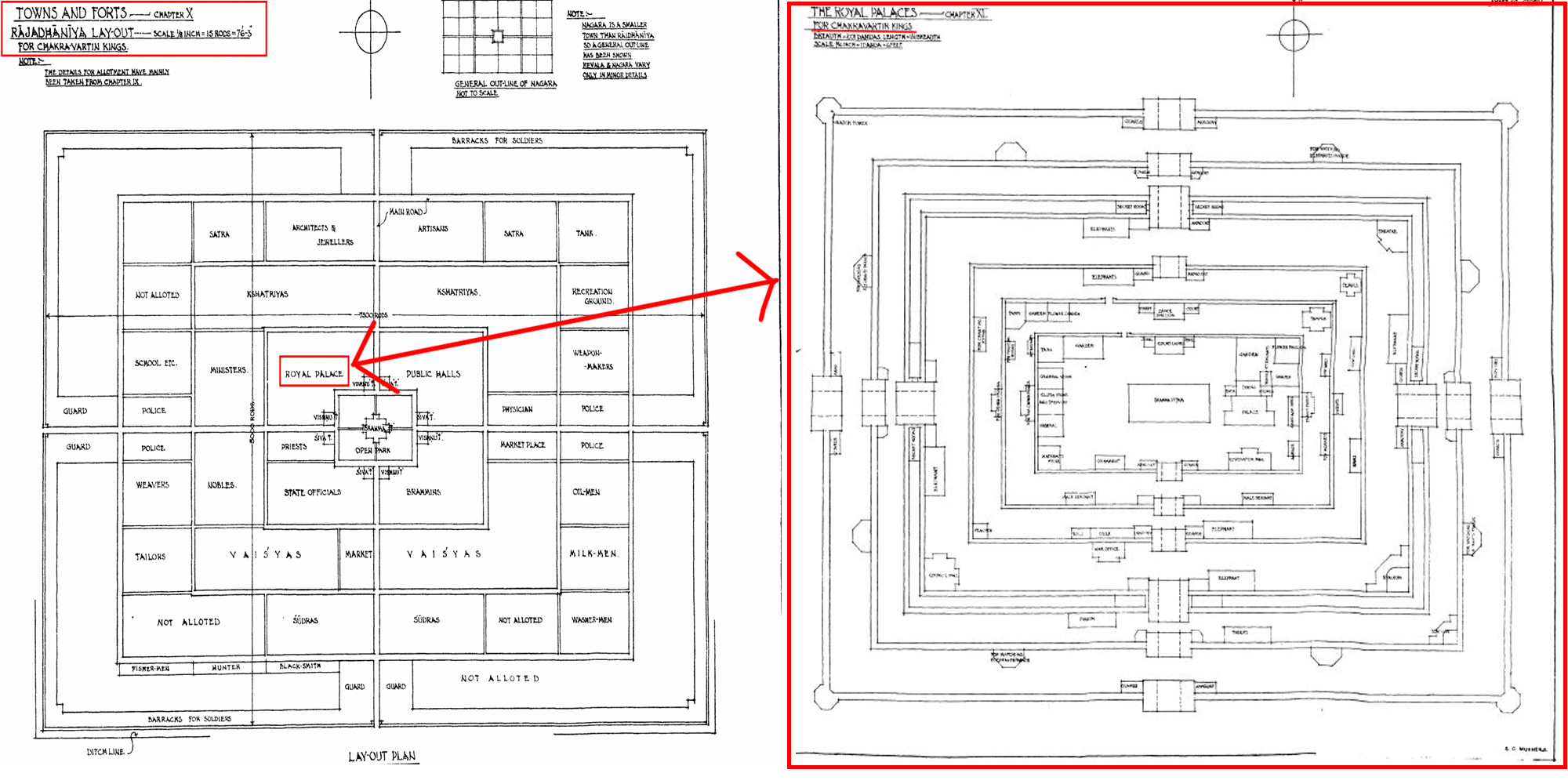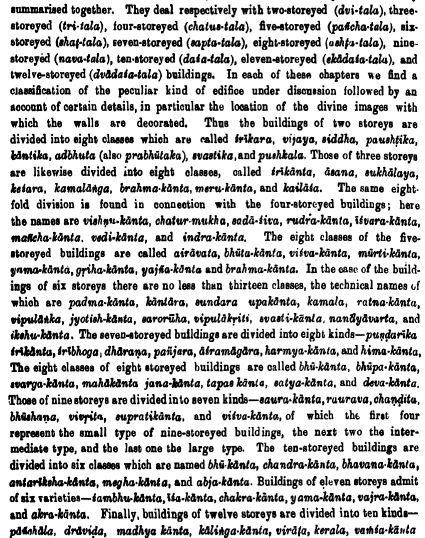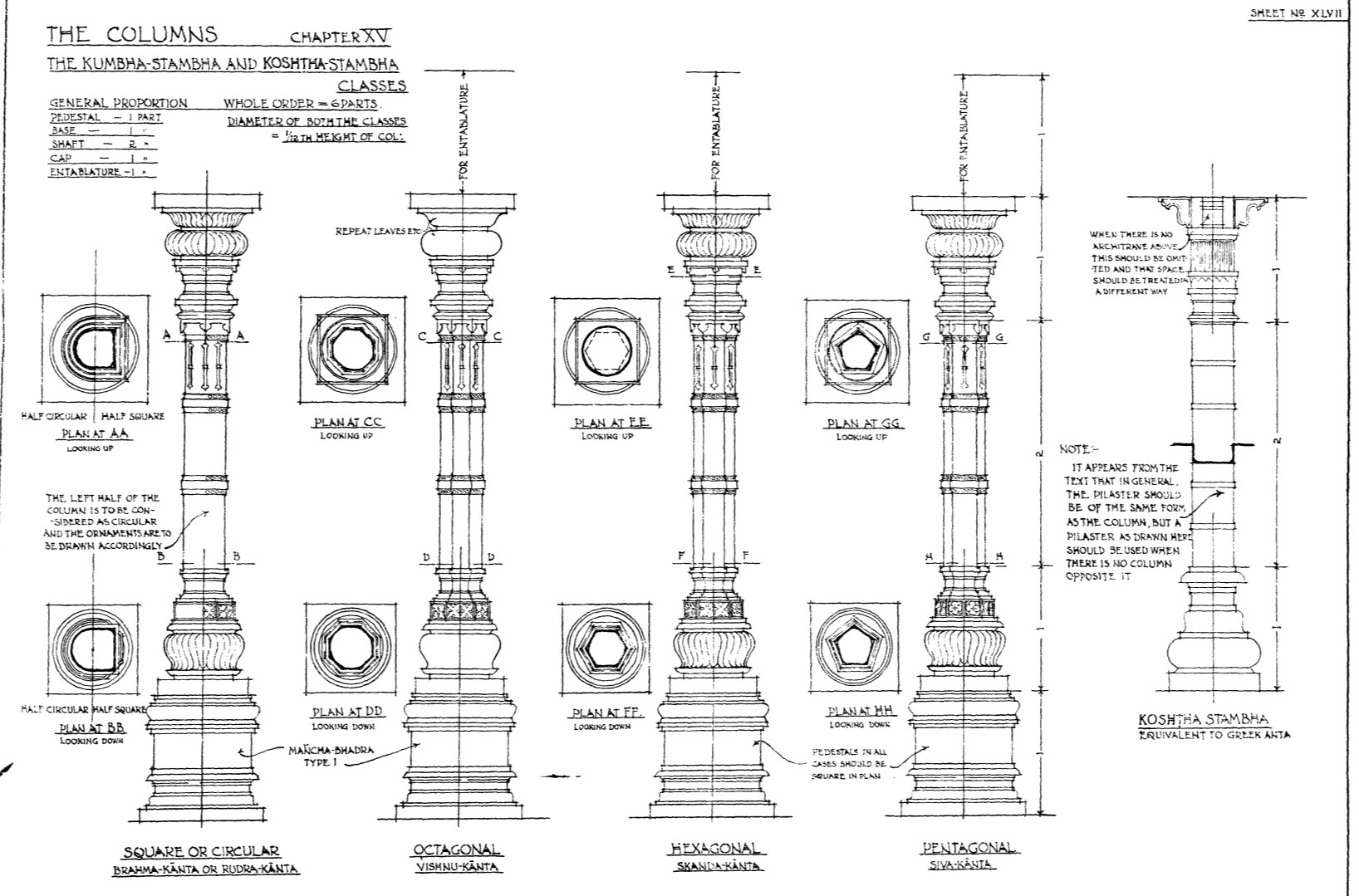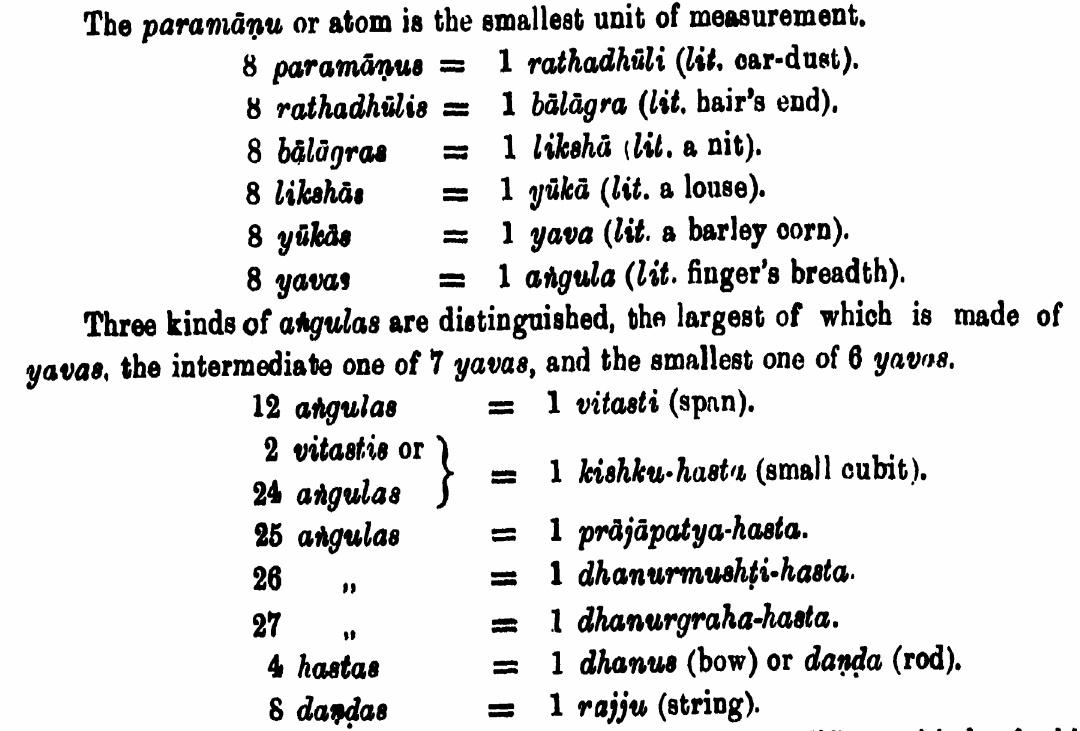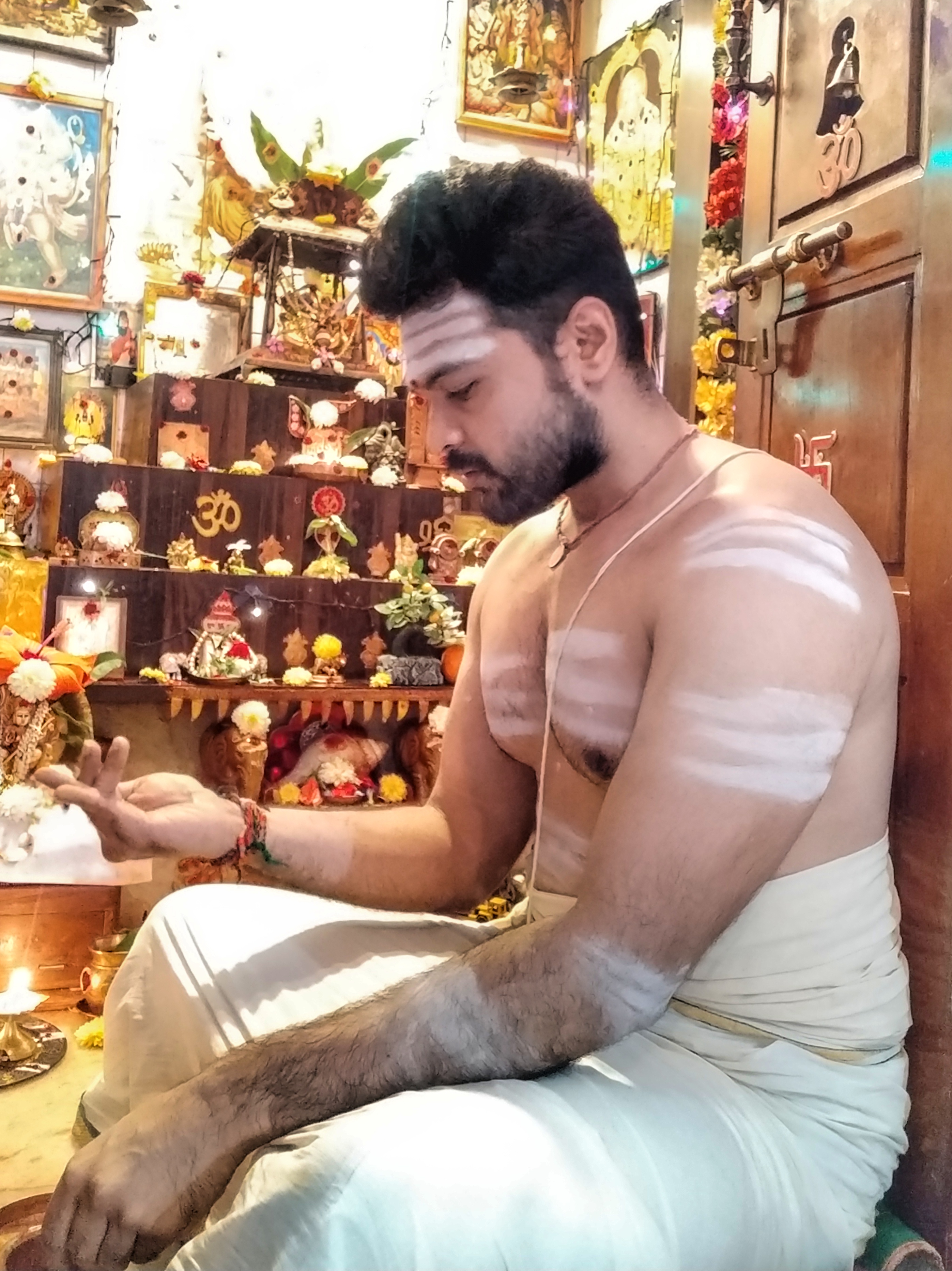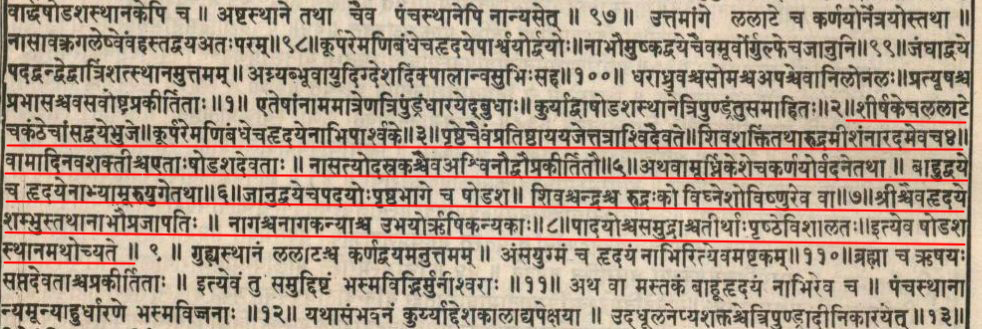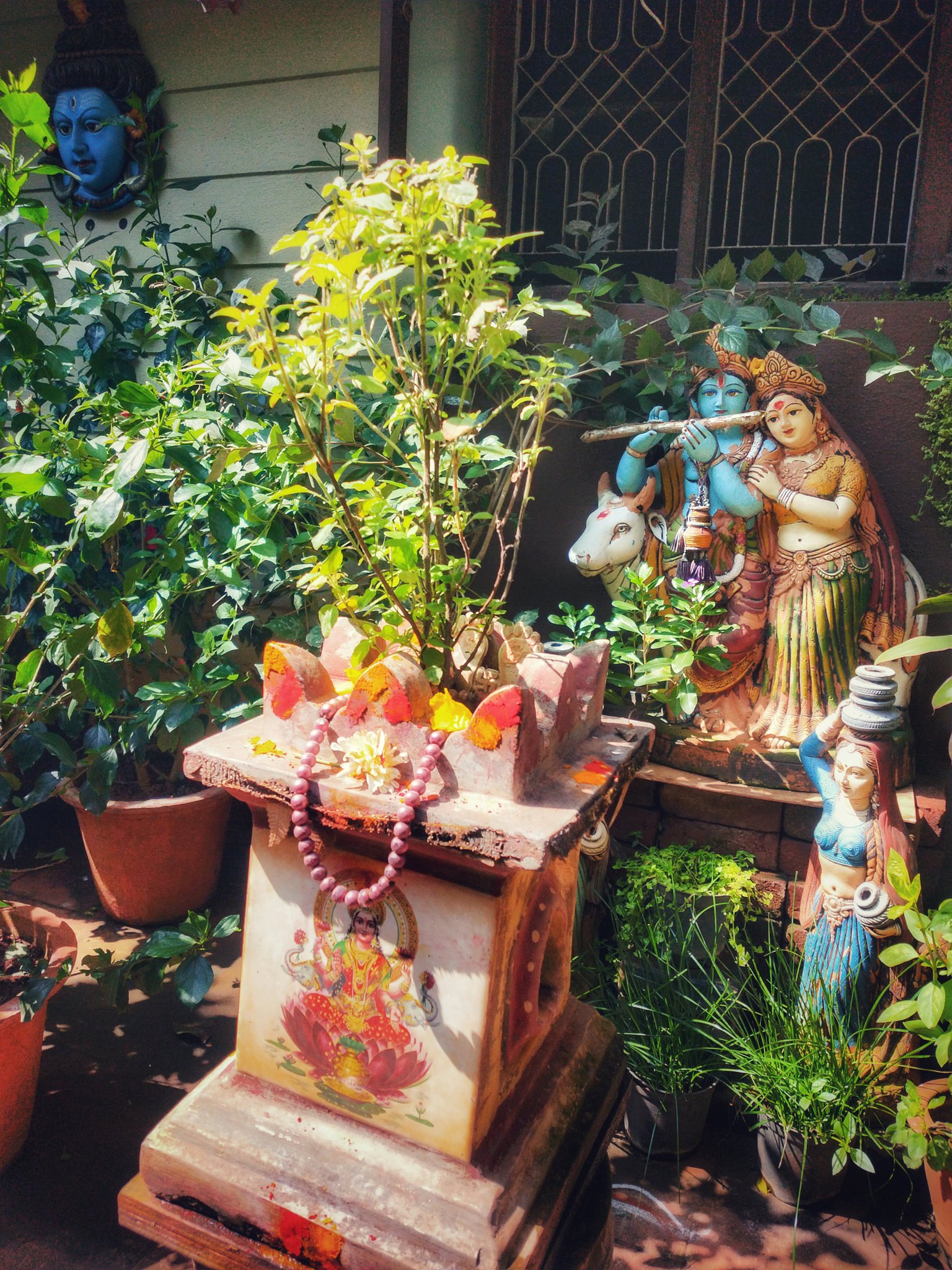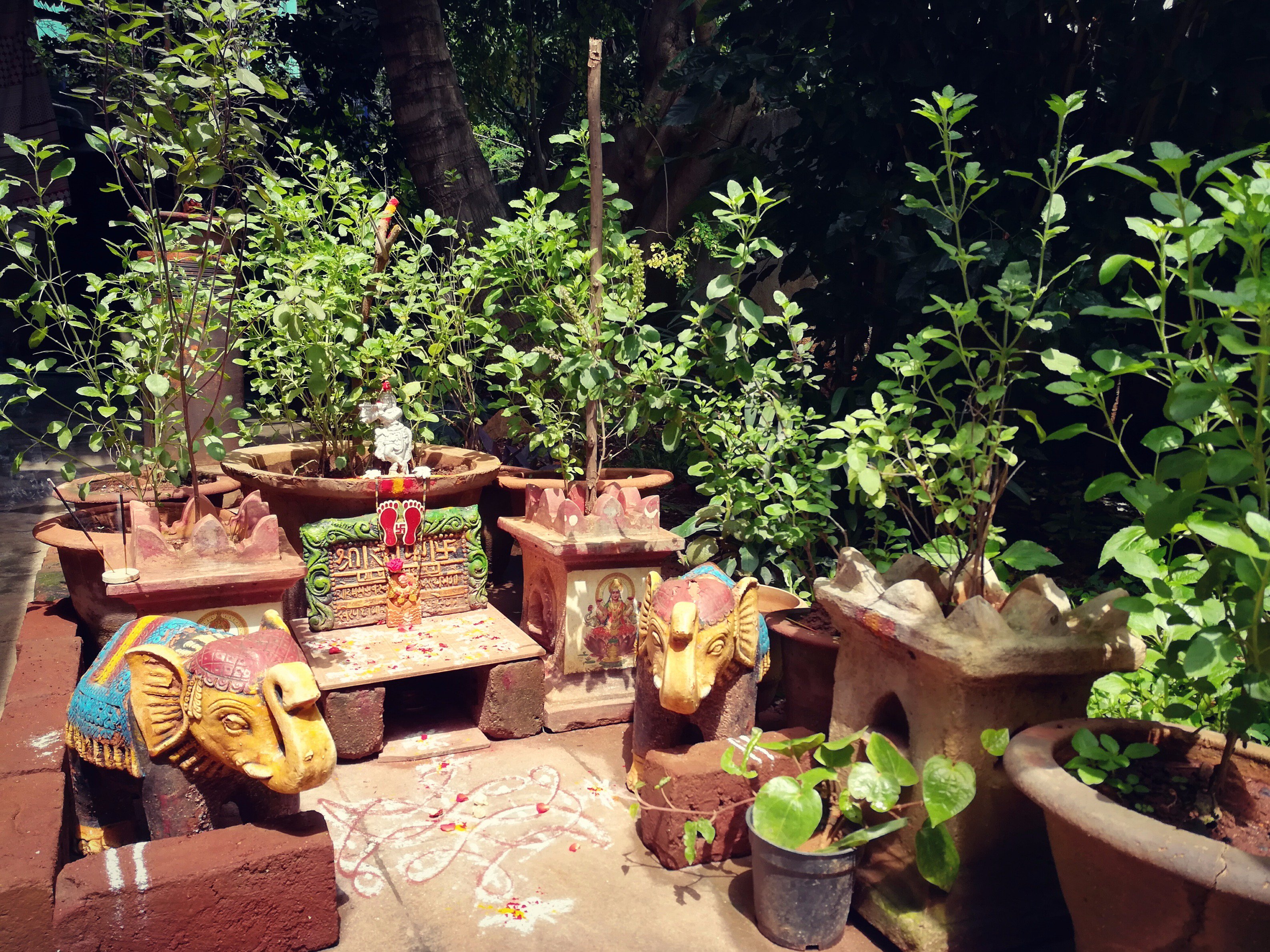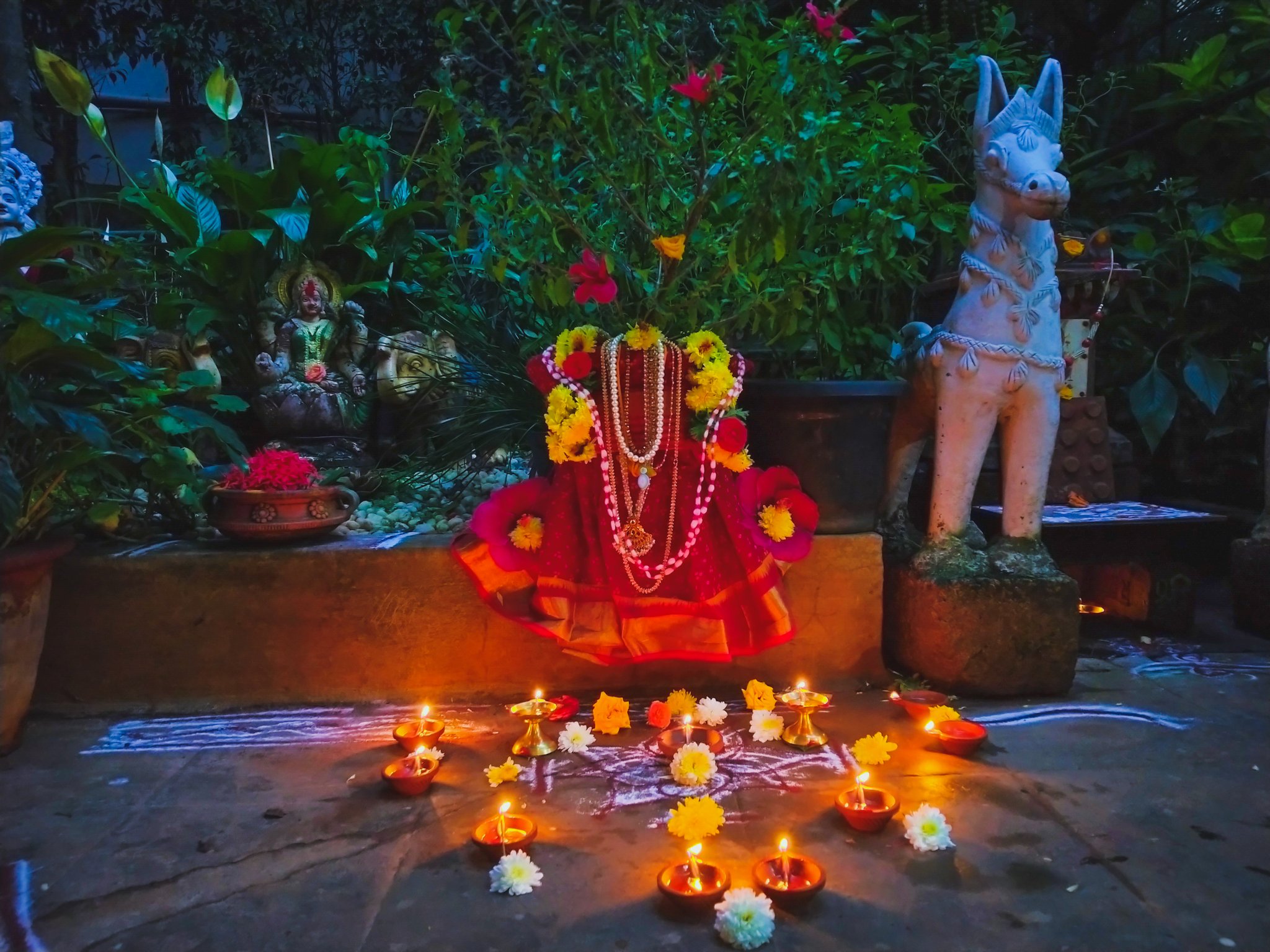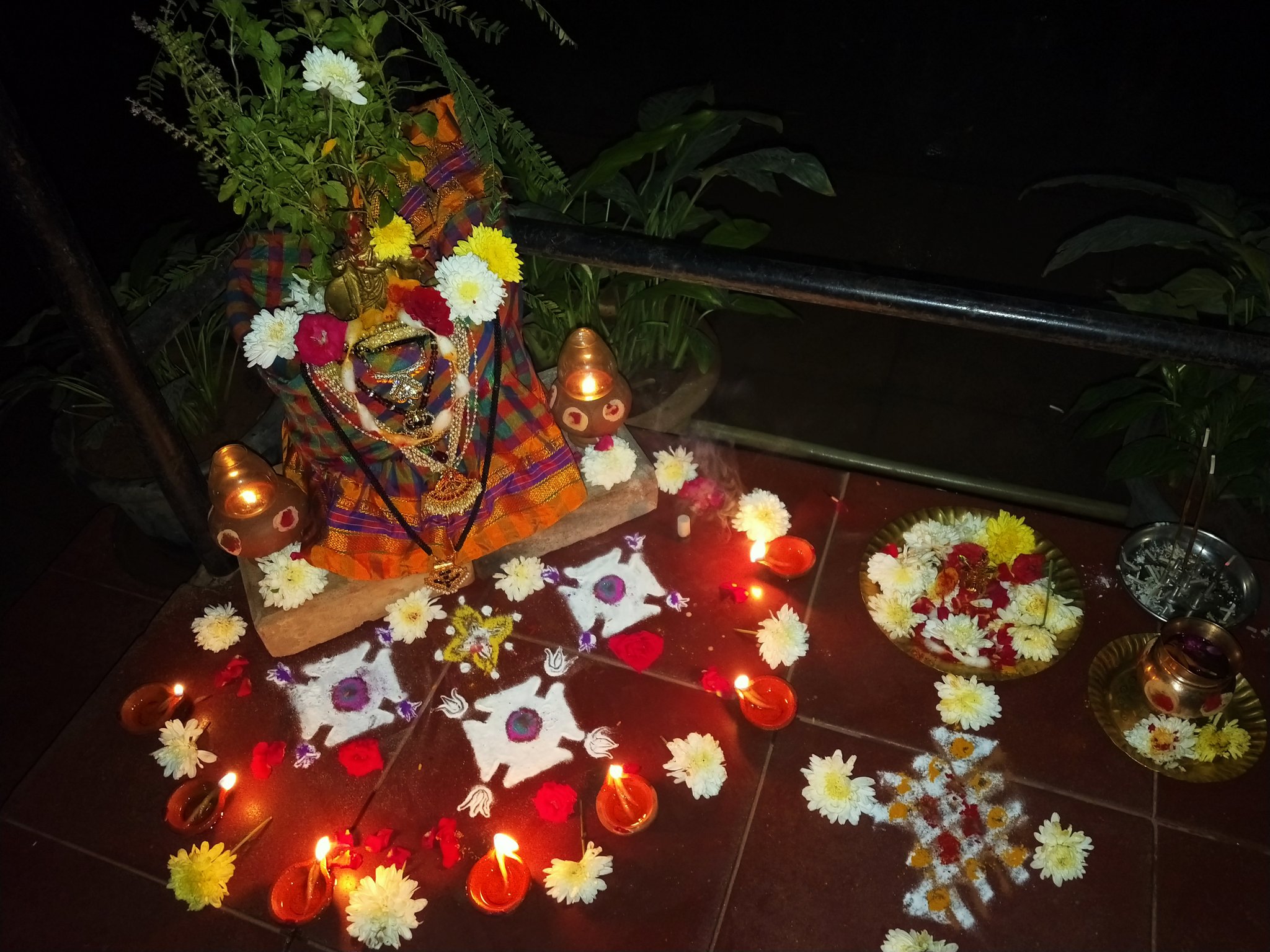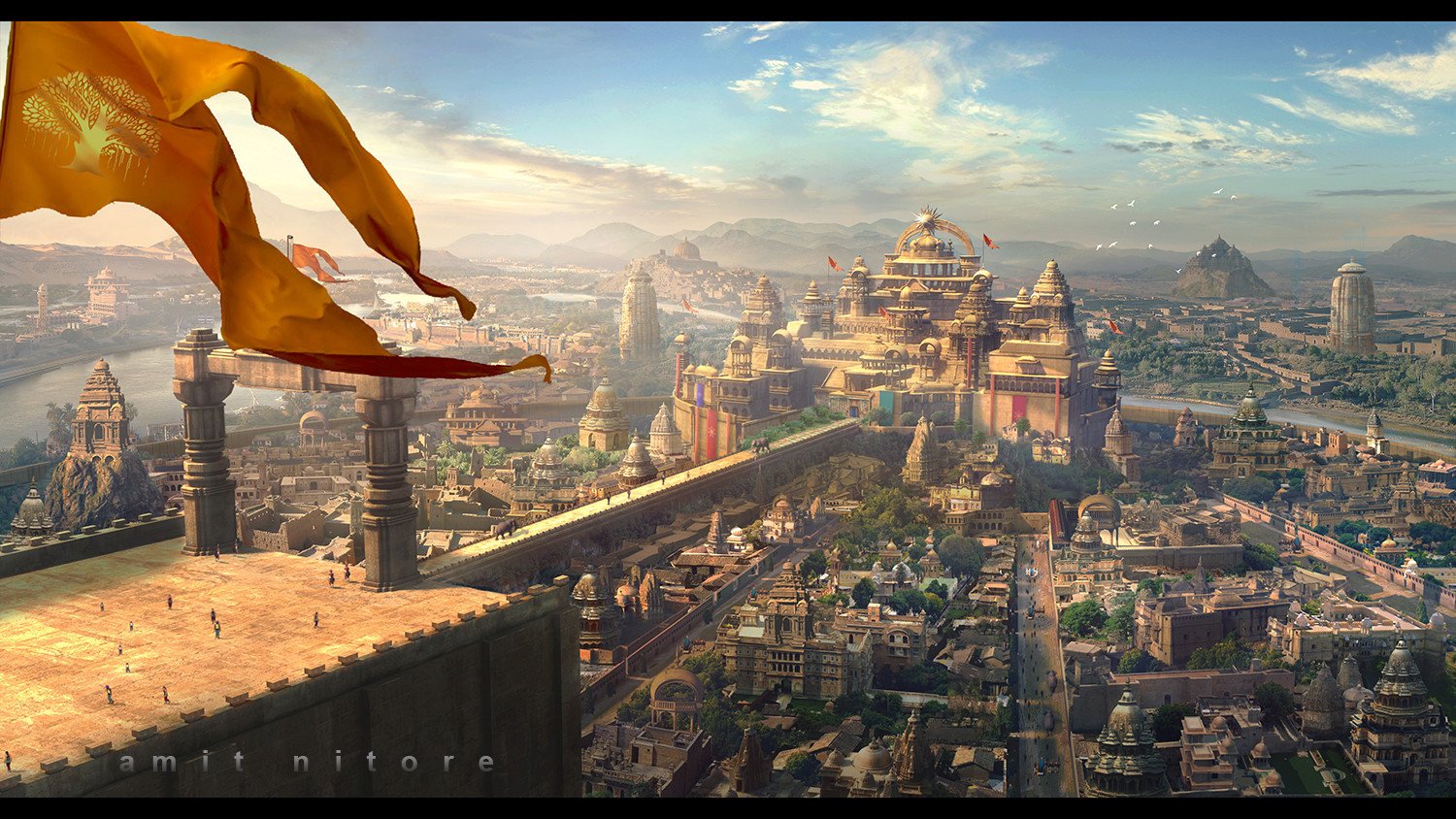 |
| An artist's impression of Ayodhya of the Purnaic era |
The below Shlokas describe Ayodhya on the banks of the Sarayu river as a magnificent city on par with Indra's abode Amaravati. Ayodhya is described as a city full of elephants, horses, chariots & foot soldiers. It tops all cities in its richness & prosperity. It has numerous broad roads & great rampart walls & golden arched gateways resembling mountain ridges & peaks.
 |
| Shlokas describing Ayodhya |
Ayodhya's squares & crossroads are well planned and neatly maintained. There are many storeyed palaces with numerous artistic alterations & modifications in the walls. It is rendered splendid by many tanks with excellent water abounding in full blown lotuses.Ayodhya is said to be well adorned with shrines of deities possessing divine splendour and is always resounded with the sounds of the chanting of the Vedas which can be heard everywhere.
The below Shlokas describe the various gardens of Ayodhya & its various flowering plants & trees. Among the trees mentioned are Saala(vatica robusta), coconut, palmyras, jackfruit, gooseberry, mango tress, wood apple, Ashoka tree. Among flowers mentioned are mallika, bakula, paatali, naagapushpa, champaka, karaveera, karnikara, ketaki. Some of the other fruit bearing trees mentioned are nimbha(margosa), jambira, kadali(banana), matulinga(pomegranate). The city is always abound with the fragrance of sandalwood.
 |
| Shlokas describing various flowering plants. |
Below Shlokas describe the citizens of Ayodhya. It has many kinds of citizens of high accomplishments such as princes having qualities of Devas, women of great beauty who are on par with Apsaras, eminent poets of great excellence, Brahmanas equal to Bṛhaspati in intelligence and merchants and other citizens who are like the Kalpa vriksha. The quality of horses in Ayodhya are on par with the Uchchaihshravas & the elephants comparable to Airavata, guarding all the directions of the city. Hence Ayodhya is compared to Indra's capital, Amaravati.
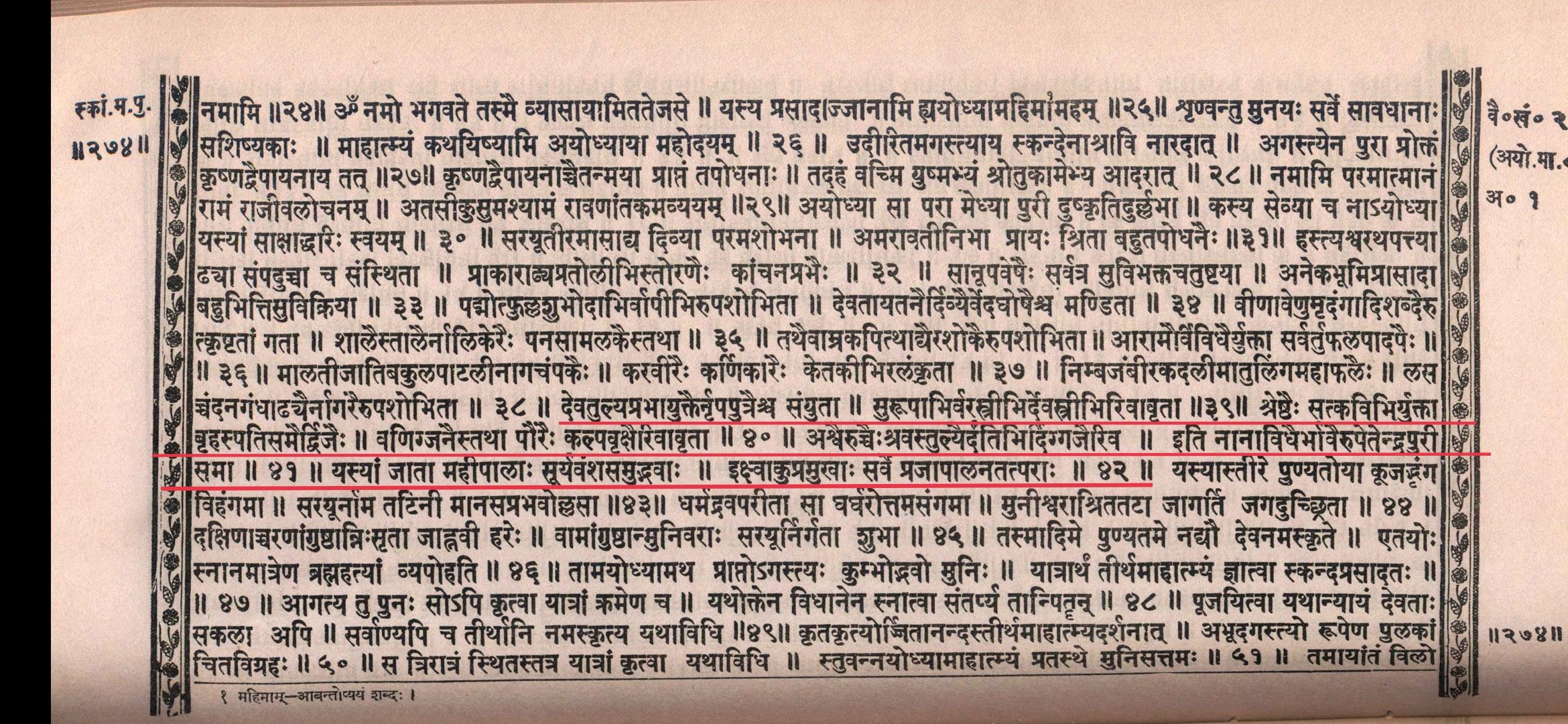 |
| Shlokas describing citizens of Ayodhya |
It was here that kings of Suryavamsha with Ikshvaaku as the foremost one, were born. All of them were devoted to protection people. The city is built on the banks of the river Sarayu whose waters are meritorious. Its banks are echoed with humming of bees & chirping of birds.The Sarayu is a sparklingly clear and beautiful river with Manasa lake as its source. It is full of holy water. The touch of this river is as excellent as that of Ganga.
 |
| Kings of Ayodhya praised |
Such is the description of Ayodhya nagara as mentioned in the Ayodhya Mahatmya in the Skandapuranam.
Reference:
Skandapuranam by Nag Publishers.




